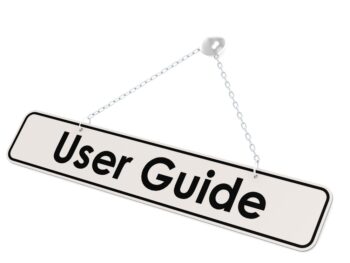Claim Resolution Should Start Immediately
Self-insured employers who utilize their own in-house adjusters often ask questions about how to arrive at a fair and equitable settlement of the workers’ compensation claims, especially claims where the employee is represented by an attorney. The reasonable resolution of a workers’ compensation claims does not start when the employee’s attorney sends a demand letter toward the end of the claim, the proper resolution of the claim starts immediately upon notice the employee has been injured in an accident.
The first thing an employer can do to move a workers’ compensation claim toward a fair settlement is to provide immediate medical care following an injury. In the states where the employer selects the medical provider, the employee should be directed to the nearby industrial clinic previously chosen (with the name/address of the industrial clinic posted on the employee’s bulletin board). In the states where the employer cannot mandate the medical provider, a short listed of recommended doctors should be posted on the bulletin board.
The first phone call the employer should make following an injury is to the medical provider’s office notifying them that the injury just occurred and advising them the employee is on the way to their office. This will streamline the admittance process for the injured employee and will reduce the amount of time between injury and medical treatment. When the injury to the employee does not appear to be severe, the initial phone call to the medical provider will also allow you to remind the medical provider of your company’s light duty program for injured employees.
Click Link to Access Free PDF Download
“8 ‘Think Outside the Box’ Tactics to Settle Workers’ Comp Claims”
The second phone call immediately following the first phone call should be to the claims office/adjuster advising of the new workers’ compensation claim. The protocol for your in-house adjusters should be to contact their fellow employee the same day to discuss their injury and the claim handling process. By taking control of the workers’ compensation claim the first day, you start laying the ground work for the claim settlement.
On-Going Contact is Essential
During the course of the employee’s recovery is essential to have on-going contact with the injured employee by the employee’s supervisor or department manager or workers’ compensation coordinator or adjuster (whoever is delegated the responsibility). By simply asking the employee to keep you abreast after each doctor’s visit of what the doctor had to say, will keep the lines of communication open and assist in getting the employee back to work on modified duty sooner. It will also make settling the claim easier as the employee sees the employer less as ‘the other side’ and more as a partner in the recovery process.
In states where the employee selects his own medical provider, often the employee’s attorney will send the employee to a doctor the attorney knows will keep the employee off work for as long as the plaintiff attorney wants the employee to be off work. [In these cases the employee’s release from medical care will coincidentally occur when the employee begins to complain to the plaintiff attorney that they are having financial issues, as they have not adjusted their life style to live on the workers’ compensation disability payments]. When the medical provider is non-cooperative about returning the employee to modified duty work, the in-house adjuster can arrange for a peer review of the medical treatment being provided or arrange for an independent medical examination to show the employee is capable of modified duty work.
If the injury is severe, a nurse case manager should be assigned to the claim to manage and direct the medical care as much as possible. By facilitating the medical care through a nurse case manager, the employee will make a quicker and better recovery with a lower overall impairment rating. This will impact the settlement negotiations favorably.
Seek Settlement When Reach Maximum Medical Improvement
As soon as the medical provider indicates the employee has reached maximum medical improvement, an effort should be made to immediately move forward with settling any compensation owed for a permanent partial impairment. A few states still use the impairment rating combined with the employee’s disability compensation rate to establish the claim’s settlement value. Most states however have gone to what amounts to a negotiated settlement of the workers’ compensation claim.
All the steps above are designed to manage and control the claim resulting in a lower initial settlement demand by the employee or the employee’s attorney.
Once the employee has reached maximum medical improvement and has been assigned an impairment rating, the in-house adjuster should thoroughly review the file and the medical facts of the injury to establish a settlement range for the claim. Once the settlement range has been determined, the adjuster should develop a negotiations strategy on how the adjuster plans to reach a value within the settlement range.
If any part of the settlement range exceeds the adjuster’s settlement authority, the adjuster should contact the person who can grant additional settlement authority with a detailed explanation as to why settlement authority over the adjuster’s settlement authority level is needed.
Employee Attorney Should Make Initial Offer
The in-house adjuster should not make the initial settlement offer until after the employee’s attorney has made their initial settlement demand. If the adjuster makes the initial offer, the employee’s attorney will negotiate up from that point. Better results are normally obtained by letting the employee’s attorney make the initial demand and negotiating down from the attorney’s settlement demand.
Once the adjuster has the demand from the employee’s attorney, the adjuster should review the attorney’s demand to determine how reasonable, or unreasonable, it is. The adjuster should evaluate the key points the attorney uses to support his/her demand and determine if there is any justifiable reason to reevaluate the adjuster’s settlement range.
The adjuster’s initial offer to settle the claim should be as far below the mid-point of the adjuster’s settlement range as the employee’s attorney initial demand is above the mid-point of the adjuster’s settlement range. The adjuster’s initial offer should include some of the key points on which the adjuster based the settlement range.
When the employee’s attorney makes a jester toward settling the claim by lowering their demand, the adjuster can mirror the attorney’s step toward claim settlement by raising the settlement offer a similar amount. By mirroring the attorney’s settlement demand reduction with an increase in the settlement offer of the same size, the adjuster signals to the plaintiff attorney what the settlement amount will be without committing to anything.
Be Aware of Attorney Negotiating Tactics
A favor ploy of plaintiff attorney’s is to stop negotiating and state they have reached their bottom line. This is an effort on the attorney’s part to get the adjuster to bid against him/herself and to raise the settlement offer multiple times without the attorney lowering the settlement demand any. This pushes the adjuster to the high end of the settlement range if the adjuster falls for the ploy. It also creates a situation where the adjuster will have to overpay to settle the claim, or enter into an extended defense of the claim. The adjuster’s best response to the attorney stating they have reached their bottom line, is a simple, “yeah, me too. I was hoping to settle the claim, but I have reached my settlement authority. If your client decides to lower their demand any, please let me know and I will pass it along to the higher ups”.
A tactic used by some attorneys to try to force a higher than justifiable settlement is to claim the employee has had a relapse. The attorney tells the employee to go back to the doctor and emphasis how much pain they are having, the difficulties they are incurring due to their impairment, and to start treatment with the doctor in an effort to get a higher impairment rating. This tactic should be countered with an independent medical evaluation to verify or disprove the worsening of condition claim.
By preparing for settlement negotiations from the start of the claim, and by planning and managing the settlement negotiations, the in-house adjuster can obtain a fair and reasonable settlement. While it takes a level of high quality claims handling to obtain an equitable settlement of the workers’ compensation claim, it is well worth the effort to obtain a proper negotiated settlement.
Author Rebecca Shafer, JD, President of Amaxx Risk Solutions, Inc. is a national expert in the field of workers compensation. She is a writer, speaker, and publisher. Her expertise is working with employers to reduce workers compensation costs, and her clients include airlines, healthcare, printing/publishing, pharmaceuticals, retail, hospitality, and manufacturing. She is the author of the #1 selling book on cost containment, Workers Compensation Management Program: Reduce Costs 20% to 50%. Contact:RShafer@ReduceYourWorkersComp.com.
Editor Michael B. Stack, CPA, Director of Operations, Amaxx Risk Solutions, Inc. is an expert in employer communication systems and part of the Amaxx team helping companies reduce their workers compensation costs by 20% to 50%. He is a writer, speaker, and website publisher. www.reduceyourworkerscomp.com. Contact: mstack@reduceyourworkerscomp.com.
©2012 Amaxx Risk Solutions, Inc. All rights reserved under International Copyright Law.













